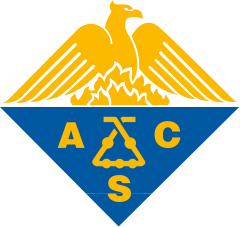Synthesis of 8-bromo- and 8-azido-2'-deoxyadenosine-5'-O-(1-thiotriphosphate)
Publication type: Journal Article
Publication date: 1993-08-01
Biochemistry
Genetics
Abstract
Abstract Treatment of 3′-O-methoxyacetylated 8-bromo-2′-deoxyadenosine (5), with a twofold excess of salicyl phosphorochloridite (6), and subsequent reaction with bis(tri-n-butylammonium) pyrophosphate and oxidation with sulfur followed by removal of the protecting group gives predominantly 8-bromo-2′-deoxyadenosine-5′-O-(1-thiotriphosphate) (7), and minor amounts of the corresponding brominated monothiophosphate. Alternatively, the photoreactive dATP analog 8-azido-2′-deoxyadenosine-5′-O-(1-thiotriphosphate) (11), is obtained by phosphorylation of unprotected 8-azido-2′-deoxyadenosine (9) with a 1.8 molar equivalent excess of thiophosphoryl chloride and bis(tri-n-butylammonium) pyrophosphate. A protection of the nucleobase 6-amino group is not required. The photoaffinity labeling reagent 11, was characterized by 31P-NMR and ion-spray mass spectroscopy and its photolysis upon long wavelength UV irradiation was studied. Both α-thioderivatives of 2′-deoxyadenosine triphosphates can be incorporated into plas...
Found
Nothing found, try to update filter.
Found
Nothing found, try to update filter.
Top-30
Journals
|
1
|
|
|
Journal of Medicinal Chemistry
1 publication, 16.67%
|
|
|
Bioorganic and Medicinal Chemistry
1 publication, 16.67%
|
|
|
Russian Journal of Bioorganic Chemistry
1 publication, 16.67%
|
|
|
Synthetic Communications
1 publication, 16.67%
|
|
|
Nucleosides, Nucleotides and Nucleic Acids
1 publication, 16.67%
|
|
|
1
|
Publishers
|
1
2
|
|
|
Taylor & Francis
2 publications, 33.33%
|
|
|
American Chemical Society (ACS)
1 publication, 16.67%
|
|
|
Elsevier
1 publication, 16.67%
|
|
|
Pleiades Publishing
1 publication, 16.67%
|
|
|
1
2
|
- We do not take into account publications without a DOI.
- Statistics recalculated weekly.
Are you a researcher?
Create a profile to get free access to personal recommendations for colleagues and new articles.
Metrics
6
Total citations:
6
Citations from 2024:
0
Cite this
GOST |
RIS |
BibTex |
MLA
Cite this
GOST
Copy
Ettner N. et al. Synthesis of 8-bromo- and 8-azido-2'-deoxyadenosine-5'-O-(1-thiotriphosphate) // Nucleosides and Nucleotides. 1993. Vol. 12. No. 7. pp. 757-771.
GOST all authors (up to 50)
Copy
Ettner N., Haak U., Niederweis M., Hillen W. Synthesis of 8-bromo- and 8-azido-2'-deoxyadenosine-5'-O-(1-thiotriphosphate) // Nucleosides and Nucleotides. 1993. Vol. 12. No. 7. pp. 757-771.
Cite this
RIS
Copy
TY - JOUR
DO - 10.1080/07328319308021508
UR - https://doi.org/10.1080/07328319308021508
TI - Synthesis of 8-bromo- and 8-azido-2'-deoxyadenosine-5'-O-(1-thiotriphosphate)
T2 - Nucleosides and Nucleotides
AU - Ettner, Norbert
AU - Haak, Ute
AU - Niederweis, Michael
AU - Hillen, Wolfgang
PY - 1993
DA - 1993/08/01
PB - Taylor & Francis
SP - 757-771
IS - 7
VL - 12
SN - 0732-8311
ER -
Cite this
BibTex (up to 50 authors)
Copy
@article{1993_Ettner,
author = {Norbert Ettner and Ute Haak and Michael Niederweis and Wolfgang Hillen},
title = {Synthesis of 8-bromo- and 8-azido-2'-deoxyadenosine-5'-O-(1-thiotriphosphate)},
journal = {Nucleosides and Nucleotides},
year = {1993},
volume = {12},
publisher = {Taylor & Francis},
month = {aug},
url = {https://doi.org/10.1080/07328319308021508},
number = {7},
pages = {757--771},
doi = {10.1080/07328319308021508}
}
Cite this
MLA
Copy
Ettner, Norbert, et al. “Synthesis of 8-bromo- and 8-azido-2'-deoxyadenosine-5'-O-(1-thiotriphosphate).” Nucleosides and Nucleotides, vol. 12, no. 7, Aug. 1993, pp. 757-771. https://doi.org/10.1080/07328319308021508.






